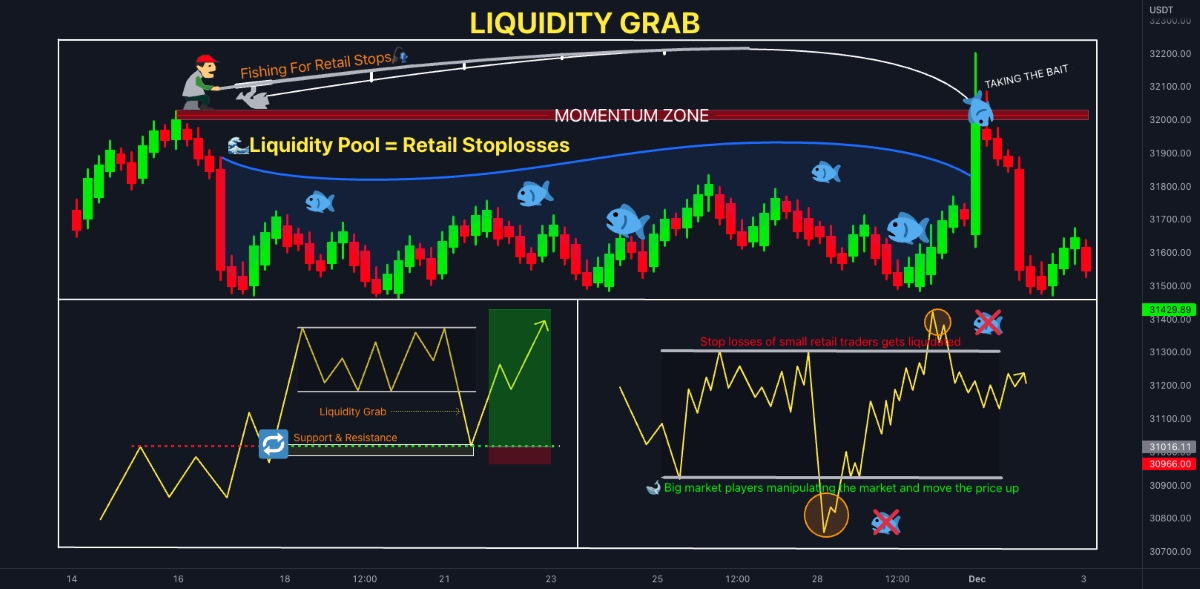

Finance
What Does An Insurance Actuary Do?
Published: November 19, 2023
Find out what an insurance actuary does in the field of finance and how they play a crucial role in assessing and managing financial risks.
(Many of the links in this article redirect to a specific reviewed product. Your purchase of these products through affiliate links helps to generate commission for LiveWell, at no extra cost. Learn more)
Table of Contents
- Introduction
- Definition of an Actuary
- Role of an Actuary in the Insurance Industry
- Analyzing Data and Calculating Risks
- Pricing Insurance Policies
- Setting Reserves and Solvency Requirements
- Assessing and Managing Financial Risks
- Developing and Implementing Actuarial Models
- Communication with Stakeholders
- Actuarial Exams and Professional Development
- Conclusion
Introduction
Welcome to the world of insurance and the fascinating role of an actuary! In a dynamic and complex industry where risk assessment and financial stability are paramount, actuaries play a crucial part in ensuring the viability and success of insurance companies. If you have ever wondered what it is that actuaries do and how they contribute to the insurance industry, you have come to the right place.
An actuary is a highly skilled professional who combines math, statistics, and business knowledge to evaluate and manage risks for insurance companies. They use their expertise to assess the likelihood of events such as accidents, illnesses, and natural disasters, and calculate the financial impact these events can have on insurance companies and their policyholders.
Actuaries are known for their analytical skills, attention to detail, and ability to interpret complex data. They help insurance companies make informed decisions by using mathematical models and statistical techniques to analyze risk and predict future events. The work of an actuary is integral to the insurance industry as it helps ensure the financial stability of insurance companies and the fair pricing of insurance policies.
In this article, we will delve into the world of an actuary and explore the essential role they play in the insurance industry. We will discuss their responsibilities, skills, and the impact they have on insurance companies. So, let’s begin our journey into the fascinating world of insurance actuaries!
Definition of an Actuary
An actuary is a trained professional who applies mathematics, statistics, and financial theories to assess and manage financial risks for insurance companies and other organizations. Actuaries use their expertise to analyze data, calculate probabilities, and develop models to predict and quantify potential risks and their financial impact.
Actuaries are essential in the insurance industry as they help insurance companies make informed decisions about pricing policies, setting reserves, and managing risks. They play a critical role in ensuring that insurance companies remain financially stable and can meet their obligations to policyholders.
To become an actuary, one must have a solid understanding of mathematics, statistics, and business principles. Actuaries often hold advanced degrees in fields such as actuarial science, mathematics, or statistics. They also need to pass a series of rigorous professional exams to obtain the necessary qualifications and certifications.
Actuaries work in a variety of industries, including insurance, finance, healthcare, and consulting. Their skills and expertise are in high demand, as organizations rely on them to assess and manage risks in an increasingly complex and unpredictable world.
Actuaries may specialize in different areas, such as life insurance, property and casualty insurance, health insurance, or pensions and retirement planning. Each area requires specific knowledge and expertise, as the risks and calculations involved can vary significantly.
Overall, an actuary is a professional who uses mathematical and statistical techniques to analyze and manage risks in the insurance industry. With their expertise, they help ensure financial stability and success for insurance companies and provide valuable insights into the ever-changing landscape of risk management.
Role of an Actuary in the Insurance Industry
The role of an actuary in the insurance industry is multifaceted and crucial to the success and stability of insurance companies. Actuaries contribute their expertise in various ways, including analyzing data, calculating risks, pricing insurance policies, setting reserves, assessing financial risks, developing actuarial models, and communicating with stakeholders.
One of the primary responsibilities of an actuary is to analyze data and calculate risks. Actuaries collect and analyze large volumes of data to understand the probability of events such as accidents, illnesses, or property damage. They use statistical models and mathematical techniques to assess the likelihood and potential severity of these events, taking into account factors such as demographics, historical trends, and external influences.
Pricing insurance policies accurately is another critical role of an actuary. They develop pricing models that consider the risks associated with different types of policies and ensure that premiums are sufficient to cover potential claims. Actuaries take into account various factors when determining premiums, including age, gender, location, and past claims history, to ensure a fair and competitive pricing structure.
Actuaries also play a role in setting reserves for insurance companies. Reserves are funds set aside to cover expected future claims and expenses. Actuaries assess the potential liability of current policies and calculate the amount of reserves needed to ensure that insurance companies can meet their obligations to policyholders. Effective reserve setting is essential for the financial stability and solvency of insurance companies.
Assessing and managing financial risks is another key responsibility of an actuary. They identify and analyze risks that can impact the financial performance of insurance companies, such as investment risks, catastrophic events, or changes in regulatory requirements. Actuaries develop strategies to mitigate these risks and help insurance companies make informed decisions to protect their financial health.
Actuaries are also involved in developing and implementing actuarial models. These models help insurance companies forecast future trends, evaluate the impact of potential scenarios, and make informed strategic decisions. Actuaries use their strong mathematical and statistical skills to develop and validate these models, ensuring their accuracy and reliability.
Communication with stakeholders is another important aspect of an actuary’s role. They present their findings, recommendations, and insights to various stakeholders, including executives, underwriters, regulators, and clients. Actuaries must effectively communicate complex concepts and data-driven insights to non-technical audiences, enabling informed decision-making and ensuring transparency in risk assessment and management.
In summary, the role of an actuary in the insurance industry is diverse and vital. They contribute to the financial stability of insurance companies through data analysis, risk assessment, pricing policies, setting reserves, managing financial risks, developing actuarial models, and effective communication. Actuaries play a critical role in ensuring that insurance companies can fulfill their obligations to policyholders and navigate the ever-changing landscape of risks and uncertainties.
Analyzing Data and Calculating Risks
One of the primary responsibilities of an actuary in the insurance industry is to analyze data and calculate risks. Actuaries rely on vast amounts of data to understand the likelihood and potential impact of various events that could lead to insurance claims. They use statistical methods and mathematical models to analyze this data and make predictions about future outcomes.
To begin the process of analyzing data, actuaries collect and organize large volumes of information relevant to the insurance industry. This data can include historical claims data, demographic information, economic indicators, and other relevant variables. Actuaries then apply statistical techniques to identify patterns and trends in the data, which help them assess the likelihood of different events occurring.
Once patterns and trends are identified, actuaries can then calculate the risks associated with these events. They estimate the probability of an event happening and the potential financial impact it can have on an insurance company. For example, actuaries may analyze historical data to determine the likelihood of car accidents occurring in a particular region and estimate the average cost of claims resulting from these accidents.
Actuaries use mathematical and statistical models to quantify the risks based on various factors, such as demographics, geography, policy attributes, and other relevant variables. These models allow actuaries to make informed predictions about the frequency and severity of future events, enabling insurance companies to assess and manage their risks effectively.
Actuaries also play a crucial role in calculating the premiums for insurance policies. Based on their analysis of data and risk calculations, they determine the appropriate level of premiums that insurance companies should charge to ensure that the expected claims and expenses are adequately covered. Actuaries take into account various factors, such as age, gender, occupation, and past claims history, to calculate a fair and competitive premium that accurately reflects the level of risk associated with the policy.
Furthermore, actuaries use their data analysis and risk calculation skills to develop underwriting guidelines. These guidelines help insurance companies assess the risk of a potential policyholder and determine whether to provide coverage and at what premium level. Actuaries consider various risk factors and utilize statistical techniques to develop risk assessment models that assist underwriters in making informed decisions.
In summary, analyzing data and calculating risks is a fundamental role of an actuary in the insurance industry. Using statistical techniques and mathematical models, actuaries assess the likelihood and potential financial impact of events that could lead to insurance claims. They provide valuable insights into risk assessment, claim prediction, pricing policies, and underwriting decisions, ensuring that insurance companies can effectively manage their risks and make informed business choices.
Pricing Insurance Policies
Pricing insurance policies accurately is a critical task performed by actuaries in the insurance industry. Actuaries utilize their expertise in data analysis, risk assessment, and mathematical modeling to determine the appropriate premiums for insurance policies. The process of pricing policies involves considering various factors, including the potential risk exposures, past claims experience, and financial objectives of the insurance company.
Actuaries begin the process of pricing insurance policies by collecting and analyzing extensive amounts of data. They assess historical claims data, demographic information, and relevant industry trends to understand the potential risks associated with offering coverage in specific areas or for particular types of policyholders. Actuaries also consider external factors such as economic indicators, regulatory changes, and emerging risks that may impact the overall risk profile of the insurance company.
Based on their analysis of the data, actuaries calculate the expected claims costs for a specific policy or portfolio of policies. This involves estimating the frequency and severity of potential claims, taking into account variables such as age, gender, occupation, and policy attributes. Actuaries use statistical techniques and actuarial models to predict the likelihood and potential impact of events that could lead to insurance claims, enabling them to quantitatively assess the level of risk associated with the coverage being offered.
In addition to assessing the risk, actuaries also consider the financial objectives of the insurance company when pricing policies. They take into account factors such as the desired profitability margins, competitive market conditions, and the need to comply with regulatory requirements. Actuaries strive to strike a balance between setting premiums at a level that adequately covers the expected claims costs while remaining competitive in the marketplace.
Actuaries also play a role in developing rating structures and rating factors that determine the premiums for different policyholders. They identify the key variables that influence the risk profile of policyholders and use these factors to differentiate the premiums charged. For example, in auto insurance, actuaries may consider variables such as driving history, vehicle type, miles driven, and geographic location when setting premiums. By incorporating these rating factors, actuaries ensure that premiums are more closely aligned with the level of risk posed by individual policyholders.
Furthermore, actuaries regularly review and update pricing models to account for changes in risk factors, industry trends, and regulatory requirements. They monitor emerging risks and adjust premiums accordingly to ensure that insurance companies are adequately compensated for the risks they assume. Actuaries also conduct profitability analyses to evaluate the effectiveness of current pricing strategies and identify areas for improvement.
In summary, pricing insurance policies is a complex task that requires the expertise of actuaries. Actuaries analyze data, assess risks, develop models, and consider financial objectives to set premiums that accurately reflect the level of risk associated with the coverage being offered. Their role is essential in ensuring that insurance policies are priced fairly and in a manner that enables insurance companies to cover claims costs, maintain profitability, and compete effectively in the market.
Setting Reserves and Solvency Requirements
Setting reserves and solvency requirements is a crucial responsibility of actuaries in the insurance industry. Reserves are funds set aside by insurance companies to cover future claims and other financial liabilities. Actuaries play a key role in determining the appropriate level of reserves to ensure that insurance companies can meet their obligations to policyholders.
Actuaries analyze historical claims data, industry trends, and other relevant factors to estimate the expected costs of future claims. They assess the potential liability of existing policies and calculate the amount of reserves needed to cover these anticipated claims. Actuaries consider various variables, such as the type of policy, emerging risks, and regulatory requirements when setting reserves.
In addition to estimating claims costs, actuaries incorporate solvency requirements into the reserve-setting process. Solvency refers to the financial strength and stability of an insurance company. Actuaries use regulatory guidelines and industry standards to ensure that insurance companies maintain sufficient reserves to meet solvency requirements. These requirements are put in place to protect policyholders and ensure that insurance companies have the financial capacity to pay claims.
Actuaries also consider the potential variability and uncertainty associated with claims costs when setting reserves and solvency requirements. They incorporate statistical techniques and actuarial models to account for potential fluctuations in claims experience and external factors that can impact the financial position of the insurance company.
Setting adequate reserves and solvency requirements is crucial for the long-term financial stability and success of insurance companies. Insufficient reserves can lead to financial strain and the inability to pay claims, while excessive reserves can erode profitability and competitiveness. Actuaries work to strike a balance between ensuring adequate reserves to fulfill obligations to policyholders and maintaining a reasonable level of profitability for the insurance company.
Actuaries regularly review and update reserve and solvency requirements to account for changes in claims experience, regulatory guidelines, and environmental factors that may impact the financial position of the insurance company. They monitor emerging risks and analyze the adequacy of reserves to ensure that insurance companies are prepared to handle potential future claims.
Collaboration with other departments within insurance companies, such as underwriting and finance, is essential when setting reserves and solvency requirements. Actuaries work together with these teams to gain a comprehensive understanding of the risks associated with different policies, coordinate pricing strategies, and ensure that financial goals are aligned with risk management objectives.
In summary, setting reserves and solvency requirements is a critical function performed by actuaries in the insurance industry. Actuaries analyze historical data, consider regulatory guidelines, and incorporate predictive models to estimate the expected costs of future claims and determine the appropriate level of reserves. By doing so, actuaries play a vital role in ensuring the financial stability and solvency of insurance companies.
Assessing and Managing Financial Risks
Assessing and managing financial risks is a fundamental responsibility of actuaries in the insurance industry. Actuaries play a critical role in identifying, analyzing, and mitigating potential financial risks that insurance companies may face. By utilizing their expertise in data analysis, risk assessment, and financial modeling, actuaries help insurance companies navigate a complex and ever-changing landscape of risks.
One of the primary tasks of actuaries is to identify and assess financial risks that can impact the profitability and stability of insurance companies. They analyze various risk factors, including investment risks, catastrophic events, regulatory changes, and market fluctuations. Actuaries evaluate the potential financial impact of these risks and develop strategies to mitigate and manage them effectively.
Actuaries utilize their strong mathematical and statistical skills to develop models and scenarios that simulate potential outcomes based on different risk scenarios. They analyze historical data, industry trends, and economic indicators to predict the potential impact of various risks on the financial position of the insurance company. By quantifying these risks, actuaries provide valuable insights and inform decision-making processes within insurance companies.
Once the risks are assessed, actuaries play a crucial role in developing risk management strategies and recommending appropriate actions to mitigate the identified risks. They collaborate with other departments, such as underwriting and investment teams, to implement risk management practices that align with the overall goals and objectives of the insurance company.
Actuaries are involved in evaluating and managing investment risks within insurance companies. They analyze investment portfolios, assess risk tolerance, and develop asset-liability management strategies. Actuaries consider factors such as diversification, asset allocation, and market conditions to ensure that insurance companies can generate sufficient returns while managing investment-related risks.
Furthermore, actuaries contribute to the development of risk-based capital frameworks and solvency assessment processes. They work with regulators and industry organizations to establish guidelines and standards for assessing the financial health and solvency of insurance companies. Actuaries participate in stress testing and scenario analysis exercises to evaluate the adequacy of capital reserves and ensure compliance with regulatory requirements.
Actuaries also monitor emerging risks and provide proactive recommendations to insurance companies. They stay updated on emerging trends, new technologies, and market developments that can pose potential risks to the financial stability of insurance companies. By identifying and analyzing these risks, actuaries help insurance companies adapt and develop strategies to stay ahead of the curve.
In summary, assessing and managing financial risks is a critical function performed by actuaries in the insurance industry. Actuaries utilize their analytical skills, mathematical expertise, and industry knowledge to identify potential financial risks, develop risk management strategies, and ensure the financial stability and success of insurance companies. With their unique skill set, actuaries contribute to effective risk management practices and help insurance companies navigate a constantly evolving landscape of financial risks.
Developing and Implementing Actuarial Models
Developing and implementing actuarial models is a critical task performed by actuaries in the insurance industry. Actuarial models are mathematical and statistical tools used to analyze data, make predictions, and estimate future events in the insurance business. Actuaries leverage their expertise in mathematics, statistics, and programming to develop these models, allowing insurance companies to make informed decisions based on quantitative insights.
Actuarial models are built upon a foundation of historical data, market trends, and relevant industry variables. Actuaries collect and analyze vast amounts of data, such as policyholder information, claims history, loss ratios, and economic indicators, to understand patterns and trends. They utilize statistical techniques and mathematical models to uncover relationships, correlations, and dependencies within the data.
Once the data analysis is complete, actuaries develop actuarial models that represent the inherent risks and uncertainties in the insurance business. These models can capture various aspects, such as pricing policies, estimating reserves, projecting future claims, evaluating investment strategies, and assessing overall financial risk. Actuaries use their mathematical expertise to create formulas, equations, and algorithms that encapsulate the patterns and relationships they have identified in the data.
Implementing actuarial models involves programming and configuring the models to be used within insurance company systems. Actuaries utilize programming languages, such as R or Python, to translate the mathematical equations and models into executable code. They build software tools and applications that integrate the actuarial models into the day-to-day operations of the insurance company.
Actuaries continuously refine and improve actuarial models based on new data, evolving business needs, and changing market conditions. They conduct rigorous testing and validation procedures to ensure that the models are accurate, reliable, and aligned with the objectives of the insurance company. Actuaries also collaborate with other departments, such as underwriting, finance, and IT, to ensure the integration and seamless functioning of the actuarial models within the broader business framework.
Actuarial models are not static but rather dynamic instruments that adapt to emerging risks, evolving regulations, and technological advancements. Actuaries stay abreast of industry developments and incorporate new variables and methodologies into their models as needed. They leverage their expertise and the advancements in data analytics and machine learning techniques to enhance the accuracy and predictive power of their models.
Developing and implementing actuarial models requires a strong foundation in mathematics, statistics, and programming, coupled with a deep understanding of the insurance business. Actuaries play a crucial role in using these models to make informed decisions about pricing policies, setting reserves, managing risks, and evaluating the financial health of insurance companies.
In summary, developing and implementing actuarial models is a vital function performed by actuaries in the insurance industry. Actuaries leverage their mathematical and statistical expertise to build models that analyze data, make predictions, and estimate future events in the insurance business. These models are then implemented within insurance company systems, enabling informed decision-making and effective risk management.
Communication with Stakeholders
Effective communication with stakeholders is a key responsibility of actuaries in the insurance industry. Actuaries must possess strong interpersonal and communication skills to convey complex actuarial concepts and insights to various stakeholders, including executives, underwriters, regulators, and clients. Clear and concise communication is essential to ensure that stakeholders have a comprehensive understanding of the risks, financial implications, and actuarial recommendations.
One important aspect of communication for actuaries is presenting their findings and recommendations to executive teams within insurance companies. Actuaries must distill complex actuarial analyses into concise and business-oriented summaries that can be easily understood by non-technical audiences. They provide clear explanations of the risks, potential impacts, and recommended actions, enabling executives to make informed decisions for the company’s strategic direction.
Actuaries also collaborate closely with underwriters, who assess and evaluate risks associated with insurance policies. Actuaries must effectively communicate their actuarial insights, risk assessments, and pricing models to underwriters, ensuring that the underwriting decisions align with the underlying actuarial analysis. This collaboration between actuaries and underwriters helps strike a balance between risk management and business objectives.
Regulatory communication is another critical aspect of an actuary’s role. Actuaries must engage with regulatory authorities to ensure compliance with regulations and to communicate the financial health and risk management practices of insurance companies. Actuaries provide insights and data required to meet regulatory reporting requirements, such as solvency assessments and financial disclosures, ensuring transparency and accountability to regulators.
Actuaries also engage with clients and policyholders to communicate the terms and conditions of insurance policies. Actuaries must be able to explain the factors that contribute to the pricing of policies, ensuring that policyholders understand the value and coverage provided. They may also provide guidance on risk mitigation strategies and answer questions related to potential claims, financial risks, and investment opportunities within insurance policies.
Effective communication also extends to internal stakeholders within the insurance company, including finance, claims, and investment teams. Actuaries collaborate with these teams to ensure that the actuarial analysis aligns with financial reporting requirements and investment strategies. They provide insights and support for capital management, reserves setting, and investment decision-making processes.
When communicating with stakeholders, actuaries must use clear and concise language, avoiding jargon and technical terms whenever possible. They must adapt their communication style to the needs and preferences of different stakeholders, using visual aids, charts, and other visual representations to enhance understanding. Actuaries must also listen actively to the concerns and feedback of stakeholders, demonstrating empathy and addressing any questions or uncertainties that may arise.
In summary, effective communication with stakeholders is a vital skill for actuaries in the insurance industry. Actuaries must be able to convey complex actuarial concepts and insights in a clear and concise manner to a diverse range of stakeholders. By building effective relationships and fostering open communication, actuaries ensure that stakeholders have a comprehensive understanding of risk assessments, financial implications, and actuarial recommendations, contributing to informed decision-making and successful risk management.
Actuarial Exams and Professional Development
Actuarial exams and professional development are essential components of an actuary’s career in the insurance industry. Actuaries undergo a rigorous examination process and engage in ongoing learning and development opportunities to acquire the knowledge, skills, and qualifications necessary for their profession.
Actuarial exams are a series of challenging assessments that actuarial candidates must pass to become fully qualified actuaries. These exams cover a wide range of topics, including mathematics, statistics, economics, finance, insurance principles, and actuarial techniques. Each exam builds upon the knowledge and skills learned from previous exams, culminating in a comprehensive evaluation of an actuary’s professional competence.
Actuarial exams are typically conducted by professional actuarial organizations or societies, such as the Society of Actuaries (SOA) or the Casualty Actuarial Society (CAS). Candidates must dedicate significant time and effort to study and prepare for these exams, often requiring months or even years of preparation. The exams are designed to test both technical knowledge and the ability to apply that knowledge to real-world scenarios.
Professional development is an ongoing commitment for actuaries throughout their careers. Actuaries must stay informed about industry developments, regulatory changes, and advancements in actuarial science and technology. Professional development activities vary and may include attending conferences, participating in seminars and webinars, completing continuing education courses, and staying up to date with relevant industry publications.
Actuarial professional organizations offer numerous opportunities for continuing education and networking. These organizations provide access to industry-specific resources, webinars, workshops, and other educational events that enable actuaries to expand their knowledge and stay current with emerging trends and best practices. Professional development also includes maintaining ethical standards and staying updated on changes in professional conduct guidelines.
Actuaries often pursue additional professional qualifications, such as becoming a Fellow or an Associate of a professional actuarial society. These designations are considered prestigious and require a combination of passing advanced exams, meeting experience requirements, and completing professional development activities. These designations signify a high level of expertise and professional competence.
Actuarial exams and professional development contribute to the continuous growth and advancement of actuaries in their careers. By acquiring new knowledge, skills, and qualifications, actuaries stay relevant in a rapidly evolving industry. Actuaries who invest in their professional development are better equipped to navigate complex challenges, embrace technological advancements, and provide innovative solutions to the insurance industry.
Additionally, actuarial exams and ongoing professional development enhance the credibility and reputation of actuaries. Employers and clients value actuaries who have demonstrated their competence through the successful completion of rigorous exams and who stay current with the latest industry trends and best practices.
In summary, actuarial exams and professional development are integral parts of an actuary’s career in the insurance industry. Actuaries undergo a rigorous examination process to acquire the necessary qualifications and continue to engage in ongoing learning and professional development activities to stay current with industry developments. Actuarial exams and professional development enhance an actuary’s knowledge, skills, and professional credibility, enabling them to thrive in their profession and make valuable contributions to the insurance industry.
Conclusion
Actuaries play a pivotal role in the insurance industry, utilizing their expertise in mathematics, statistics, and business to assess and manage risks. From analyzing data and calculating risks to pricing insurance policies, setting reserves and solvency requirements, assessing financial risks, developing actuarial models, and communicating with stakeholders, actuaries provide invaluable insights and guidance to insurance companies.
Their work ensures that insurance companies can accurately assess and manage risks, set fair premiums, and maintain financial stability. Actuaries help insurance companies navigate a complex landscape of risks, enabling them to make informed decisions and effectively protect their policyholders.
Through their rigorous examination process and commitment to professional development, actuaries continually enhance their knowledge and skills, stay updated with industry trends, and meet the highest professional standards. Actuarial exams and ongoing learning contribute to the credibility and expertise of actuaries, reinforcing their ability to provide accurate assessments and strategic guidance to insurance companies.
In conclusion, the role of an actuary in the insurance industry is essential for ensuring the financial stability and success of insurance companies. Actuaries work diligently to analyze data, assess risks, develop models, and communicate with stakeholders to make critical decisions regarding risk management, pricing policies, and financial solvency. With their expertise and dedication, actuaries are the backbone of the insurance industry, supporting the fair and sustainable provision of insurance coverage to individuals and businesses alike.














